- Lani Maestro in Bataville , Lorraine
- Michel Aubry, Vercors Regional Nature Park
- Michel Aubry, Pilat Regional Nature Park
- Élisabeth Ballet, Pilat Regional Nature Park
- Élisabeth Ballet, Monts d’Ardèche Regional Nature Park
- Susanne Bürner, Vercors Regional Nature Park
- Susanne Bürner, Lorraine Regional Nature Park
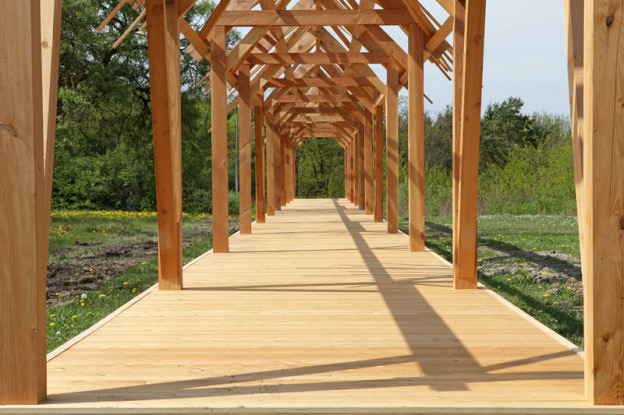
Lani Maestro in Bataville , Lorraine
Limen
Le site de Bataville est né en 1931 à l’initiative de Tomáš Bata, fondateur du groupe industriel du même nom. Il compte 2 700 ouvriers en 1939, 840 en 2001. La délocalisation des activités en 2002 débouche sur le licenciement de 800 personnes. Au moment de la commande quelques entreprises étaient implantées sur le site qui accueillait aussi l’ancienne Communauté de communes du Pays des étangs, installée dans l’ancien magasin d’usine.
En 2010, Bataville entre dans une phase intermédiaire de son évolution. L’association La Chaussure Bataville, en collaboration avec les collectivités locales, a souhaité développer un projet culturel et économique qui accompagne cette mutation. Comment faire coexister la mémoire encore vive d’une cité organisée autour du travail à l’usine et la possibilité d’autres usages ?
Lani Maestro envisage sa proposition comme l’«antithèse du lieu et du travail industriels» et comme un espace collectif. Limen — mot latin qui signifie « seuil », «passage d’un état vers un autre » — est le titre de cette sculpture. C’est une structure ajourée composée d’une longue plateforme surmontée d’une charpente de bois. Elle évoque le tunnel et le pont par le rythme régulier de ses travées et sa fonction de passage.
L’œuvre invite à la promenade et au repos comme « manière d’être avec soi-même », s’anime de notre présence et de celle des autres. Elle est installée entre l’ancienne cantine et le site de production, près d’un
communiqué de presse, avril 2014 – pdf
commanditaires : Commune de Moussey, d’anciens salariés des usines Bata et association La Chaussure Bataville
soutien : Parc naturel régional de Lorraine dans le cadre du programme européen LEADER (Fonds européen agricole pour le Développement rural), Fondation de France, Drac Lorraine, Région Lorraine, Département de la Moselle
2014
crédits photographiques Phoebé Meyer
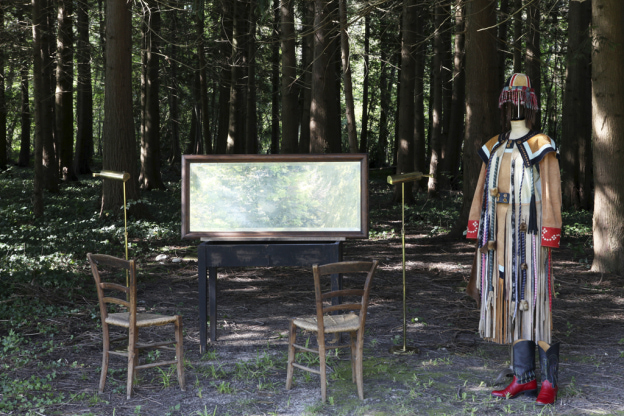
Michel Aubry, Vercors Regional Nature Park
The 72 593th Part of the world
Commissioned within the framework of the inter-parks cooperation project Paysage Industriel (Industrial Landscape): Monts d’Ardèche, Lorraine, Pilat, Vercors
The 72 593th Part of the world
Traditional crafts hold an important place in Royans-Vercors’ history. The production of wooden tableware especially, boomed during the second half of the XXth century, with some fifty companies employing more than six hundred workers. Today only four workshops are in operation. The work requested here must draw on the threads of the past to think of the future and account for the territory’s plural realities.
Straight away, Michel Aubry chooses to decompartmentalize his subject and associate the Vercors project with the one taking place in parallel at the Pilat park. His research is based on three works that evoke the industrial landscape and the relationship with natural resources: Paysage avec travaux de la mine (1544) (Landscape with mine work) by Herri met de Bles, Le Feu (1606) (The Fire) by Jan Breughel the Elder and La Sixième Partie du monde (1927) (A 6th Part of the World) by filmmaker Dziga Vertov.
Michel Aubry’s proposal for the Vercors park is inspired by a sequence from La Sixième Partie du monde showing a Siberian shaman who dances “in a costume laden with symbolic objects, both protection and a conductive jacket linked to natural elements.” He rethinks the shaman’s costume and associates it with the sound tubes designed in the turnery tradition. “Like the shaman, sound connects elements coming from the forest to material objects.”
On the 27th September 2014, Marianne Baillot initiated the work with a choreographic performance.
Today The 72 593th Part of the World is part of the Conservation of the Drôme Department collection and is on permanent display in the municipal council room of Saint-Jean-en-Royans. Other variations of the dance are scheduled for the Vercors region.
Press release, September 2014- pdf
Patrons: Members of the Arbre and Engivane associations and the Vercors Regional Nature Park
Funding: Fondation de France/ New Patrons programme, Vercors Regional Nature Park, European Agricultural Fund for Rural Development: LEADER, Department of Drôme, the town of Saint-Jean-en-Royans
2014
crédits photographiques Phoebé Meyer
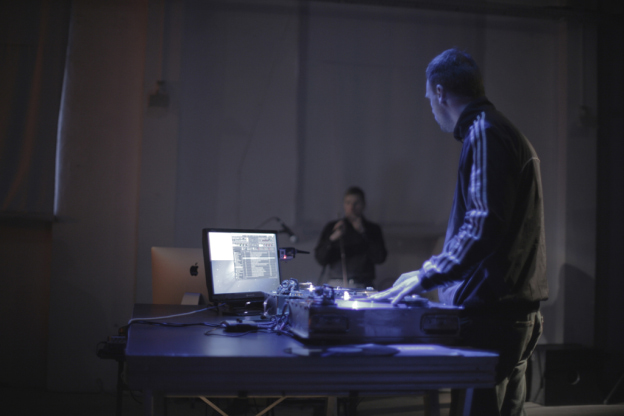
Michel Aubry, Pilat Regional Nature Park
La 213 429th Part of the World
The 213 429th Part of the World is Michel Aubry’s response to a commission given by the Iguerande association and the Pilat Regional Nature Park. It covers an area that retains few architectural traces of its metallurgy activity. All that remains is the notion of a dirty job in contact with black dust. There is a real working culture, however, in the manufacture of the finished object, as well as small companies whose specialization stems from ancient skills in the foundry and precision mechanics and locksmithing industries. How then to restore the place of an industry on the scale of a landscape whose resources have contributed to its development?
Michel Aubry’s proposal echoes the changes in Pilat’s sound environment with the installation of numerous forges, stones used for nailsmithing and subcontracting workshops for the valley’s main industry. Michel Aubry questions this sound footprint by making sound recordings inside the companies. These recordings lead to editioned vinyl records and the manufacture, by the Trouillet company in Saint-Julien-Molin-Molette, of a metal case intended to accommodate an instrument that integrates a pair of turntables and a mixer. It allows you to create compositions from engraved sounds and premixes from the samples.
The records are published in seven examples and assembled in two boxes. The work was performed during a concert performance by hip-hop scratcher Matthieu Crimersmois and dj artists on the 4th July 2014 in the Sainte-Julie factory at Saint-Julien-Molin-Molette.
press release, July 2014 – pdf
Patrons: Éric Perrin, historian and member of the Iguerande association, the Pilat Regional Nature Park
Funding : Fondation de France/ New Patrons programme, Vercors Regional Nature Park, European Agricultural Fund for Rural Development: LEADER 2014
2014
Photographic credits: Marc Domage (2,3) and Emmanuelle Boccou
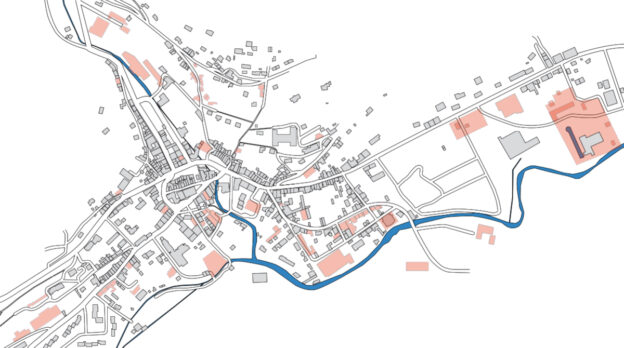
Élisabeth Ballet, Pilat Regional Nature Park
Situated in the Pilat Regional Nature Park near Saint-Etienne, the town of Bourg-Argental has retained the imprint of a textile activity developed there since the 16th century. Everything needed for textile production was in evidence – milling, warping, weaving, braiding, ribbon making; buildings linked to the industry made a strong mark on the landscape.
The project, initiated by the town of Bourg-Argental, is part of the Industrial Landscape programme unfolding in the four regional nature parks of Pilat, Monts-d’Ardèche, Lorraine and Vercors. Residents and elected officials wished to highlight the industrial past and make the conscious and unconscious traces of the textile industry legible. It is a question of addressing spaces created by the destruction of certain buildings in line with architecture still in existence.
Élisabeth Ballet initially conducted a meticulous investigation to collect data on weaving and ribbon making, but also to reread, spatially, Bourg-Argental’s industrial history. The places she identified could not be used (either inaccessible or decreed flooded, by the state), so in 2013, the commune invited her to invest in a central space that was the former site of the Jarrosson textile factory.
Élisabeth Ballet’s work takes shape in this space and goes beyond, including a trail that retraces the town’s textile activity, as well as a book.
- Jarrosson Square: finding a purpose.
The first thing to do is to clear the original factory space by removing everything that obstructs the square, and reveal the original gate and surrounding wall at the bottom of the garden. “Then the square will turn into a pedestrian agora, the garden part raised like a stage, opens onto the town and is visible to everyone.”
On the ground, granite paving will depict weaving in motion across its entire length, then continue past the route nationale, to suggest that weaving gave work to the whole town with some fifty factories and studios dedicated to textile.
- The trail through the town.
With the help of Mr. Michel Linossier, former weaving combs manufacturer, Élisabeth Ballet located a large section of the missing workshops street by street, and drew a map to guide the visitor on his/ her journey through the town. An enamelled sign serves as a landmark at each site.
- The Book
Because a physical artwork cannot reveal the work of research, Élisabeth Ballet wanted to produce a book to restore the profile of weaving spaces. “It will be divided into one part for drawing, another for the archives and interviews. I have collected instruction books, sample books and more technical archives on the practice of weaving….My objective is to show, through the progressions of words, a changing profession, through images, which is emblematic of places and practices in a factory that was witness.”
Patrons: The commune of Bourg-Argental, represented by mayor Stéphane Heyraud and deputy mayors.
Funding: Pilat Regional Nature Park, within the European LEADER programme (European Agricultural Fund for Rural Development), Fondation de France /New Patrons, the town of Bourg-Argental
In Progress
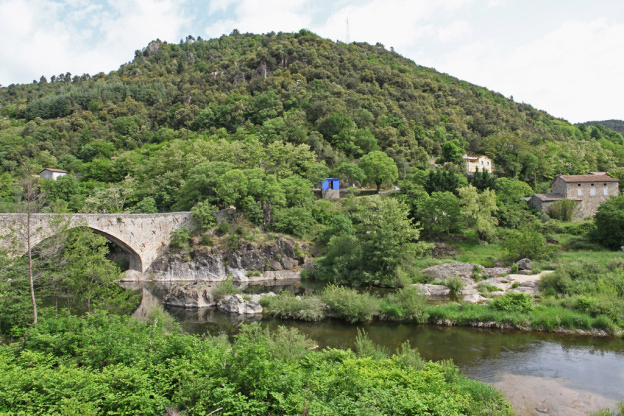
Élisabeth Ballet, Monts d’Ardèche Regional Nature Park
You Will Tell Me
You Will Tell Me is Élisabeth Ballet’s response to a commission awarded by elected officials and residents of the former Eyrieux-aux-Serres Community of Communes and the Monts d’Ardèche Regional Nature Park. Today this region, located in the middle range mountain zone, has more than twenty abandoned milling and weaving workshops and the question of their reclassification is recurrent. The Community of Communes wished to reflect on the presence and transformation of this industrial landscape and to address the social dimension of textile work.
In Saint-Sauveur-de-Montagut, the presence of the Moulinon on the banks of the River Eyrieux is strong evidence of local working history. Élisabeth Ballet created a “listening chamber” in the old station stop across the river opposite the old mill. This shelter is painted blue and is preceded by a terrace equipped with two red-brown concrete benches. Inside, a window fitted with a railing was broken open to offer a frontal view of the Moulinon. An audio montage is broadcast in various places to multiply listening points.
“The distance between the factory that we will admire and the site itself,” writes the artist, “will allow the creation of an intangible work.” In the listening chamber, the sounds of the river, the turbine and of nature mingle with noises of machines and voices of factory workers. “These voices invite us to take time to listen to stories of work accomplished here – its price, its joys and sorrows – and thus learn about the workers’ skills.”
Patrons: elected officials and residents of the former Eyrieux-aux-Serres Community of Communes and the Monts d’Ardèche Regional Nature Park.
Funding: Monts d’Ardèche Regional Nature Park as part of the European LEADER programme (European Agricultural Fund for Rural Development), Fondation de France / New Patrons, Rhône-Alpes Region, former Community of Communes Privas Centre Ardèche.
2014
Photographic credits: Phoebé Meyer
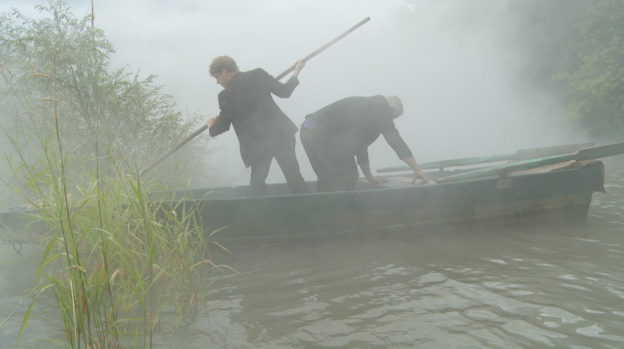
Susanne Bürner, Vercors Regional Nature Park
The Crossing
The Isère and the Work:
The communes on the left bank of the Isère river are situated within Grenoble’s urban expansion and on the historic route linking the Alps to the Mediterranean. Real estate pressure due to proximity to the Grenoble agglomeration and the grouping of communes into communities made these villages reposition themselves in order to preserve their specificities.
In the context of the region’s growing urbanisation, the old industrial sites are part of common imagination in connection with local working class history forged over several generations. Susanne Bürner was invited to take note of this observation. Two emblematic sites were located – the old royal Saint-Gervais canon foundry and the Echaillon quarries.
Susanne Bürner did not want to limit her research to the history of the two communes however, she immersed herself in local geography, visited many sites and collected stories as well as rich iconography on the industrial history of the two banks of the Isère. During the course of her reflections, the river’s role appeared strategic – it facilitated the circulation of goods, people and labour with bridges, boats, rafts and traps. Its strong presence at the foot of the Vercors hills always impresses the traveller. It is also through the eyes of a foreigner, in this case a young boatman, that Susanne Bürner presents fiction in the form of a film, The Crossing. The publication of two leperellos, L’Isère and Le Travail, (The Isère and The Work), combine images, archival drawings and the artist’s own photographs.
invitation, Decembre 2014 – pdf
La Traversée
L’Isère and Le Travail (The Isère and The Work)
Artist’s edition, 600 examples
Width of leperello when opened out: 104 x 10.4cm
10 euros for the set
Patrons: Saint-Gervais Commune represented by Madame Faure, the mayor, members of the SPIA association – Sauvegarde du patrimoine industriel d’autrefois (Safeguarding the Industrial Heritage of Yesteryear) and the Vercors Regional Nature Park
Funding: Vercors Regional Nature Park within the Framework of the European LEADER programme (Fonds européen agricole pour le Développement rural), Fondation de France / New Patrons Programme
Film credits: Susanne Bürner, photographic credits: édition Phoebé Meyer
2014
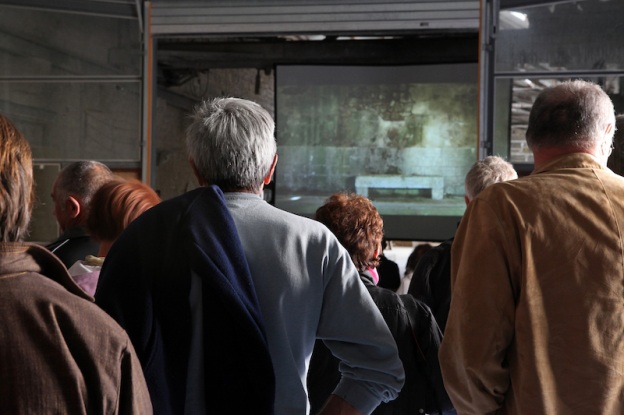
Susanne Bürner, Lorraine Regional Nature Park
Euville
The Euville quarries on the edge of Meuse are an emblematic part of Lorraine. The exploitation of limestone until the beginning of the 20th century left many traces: vestiges of industrial exploitation, buildings and tools from different eras, remains of the old quarrymen’s village.
Owned by the Pays de Commercy (group of communes), the site is in the process of becoming a major tourist attraction site. The patrons wanted the creation of an enduring work that could encourage reflection on the quarry landscape’s transformations.
Avoiding an over-documentary restitution of places and traces of life, Susanne Bürner prefers to underline the mysterious aspects and the fictional potential. Her proposal takes shape over three media: a book, a film and photographs.
The book, Euville tackles the human side of quarry history. The first section presents photographs taken by the artist inside old extraction galleries, followed by texts by Pierre Briot and Jean-Paul Streiff retracing daily life in a quarry. It includes images of graffiti drawn by workers on the walls of the galleries, accompanied by short stories collected by Susanne Bürner.
The film Pierre et Poussière (Stone and Dust) dwells on the imaginary dimension of the place – we follow two teenage girls who explore landscapes structured by previous activities, but also sites that are on the verge of disappearing: the café, the old washhouse….
The Cavaliers (The Cavaliers) photographic prints show the evolution of the landscape since the cessation of activity and the extent of vegetation. Two images in black and white punctuate a series that through its presentation suggests the story of a ramble. The eye discovers, over points of view, clues, reminiscent in small touches, of the industrial past. However doubts may persist about the origin of the landscapes.
Pierre et Poussière
Les Cavaliers
Euville
Captures éditions, en partenariat avec le Vent des forêts—espace rural d’art contemporain et l’office de tourisme du Pays de Commercy
commanditaires : Office de tourisme et Communauté de communes du Pays de Commercy
soutien : Parc naturel régional de Lorraine dans le cadre du programme européen LEADER (Fonds européen agricole pour le Développement rural), Fondation de France, DRAC Lorraine, Région Lorraine, Département de la Meuse
2012
crédits photo/vidéo Susanne Bürner, Phoebé Meyer















































